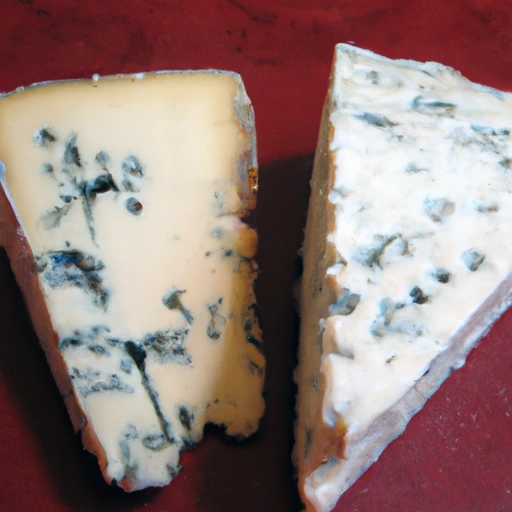Roquefort
Description

Roquefort is a sheep milk cheese from the south of France, and together with Bleu d'Auvergne, Stilton, and Gorgonzola is one of the world's best known blue cheeses. Roquefort is white, tangy, crumbly and slightly moist, with distinctive veins of blue mold. It has a characteristic fragrance and flavor with a notable taste of butyric acid; the blue veins provide a sharp tang. The cheese is aged in the natural Combalou caves of Roquefort-sur-Soulzon.
Common uses
Roquefort cheese is commonly used as a table cheese, as well as in salads, dressings, and as a flavoring for various dishes.
Nutritional value
Calories
Approximately 369 calories per 100 grams (3.5 oz).
Protein
About 21.54 grams (0.76 oz) of protein per 100 grams (3.5 oz).
Fat
Approximately 31.08 grams (1.1 oz) of fat per 100 grams (3.5 oz), with 20.7 grams (0.73 oz) of saturated fat.
Carbohydrates
Nearly 2 grams (0.07 oz) of carbohydrates per 100 grams (3.5 oz).
Vitamins
Contains Vitamin A, Vitamin B2 (Riboflavin), B6, B9 (Folic acid), and B12.
Minerals
Rich in minerals like Calcium, Phosphorus, and Sodium.
Health benefits
Roquefort cheese is rich in vitamins and minerals, contributing to bone health and potentially aiding in the prevention of cardiovascular diseases. The presence of probiotics in blue cheese is also thought to contribute to gut health.
Potential risks
Due to its high saturated fat and sodium content, excessive consumption of Roquefort can lead to potential health risks such as increased blood pressure and heart disease. It may also cause issues for those with lactose intolerance or mold allergies.
Common recipes
Used in recipes such as Roquefort pear salad, steak with Roquefort sauce, and Roquefort quiche.
Cooking methods
Roquefort can be melted into sauces, crumbled over dishes, or used in baking.
Pairing with other ingredients
Pairs well with nuts, figs, pears, and bold red wines such as Cabernet Sauvignon.
Summary
Roquefort is a versatile and flavorful blue cheese with a rich history and substantial nutritional value. While it adds a piquant flavor to a variety of dishes, mindful consumption is advised due to its saturated fat and sodium content.